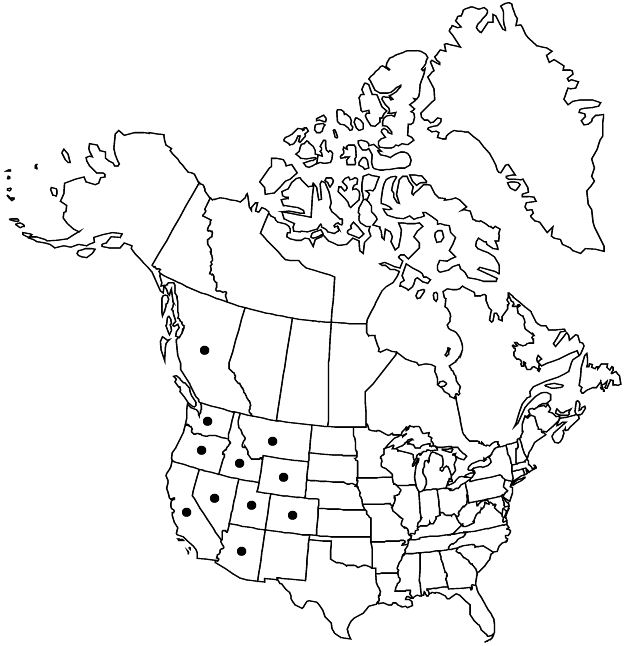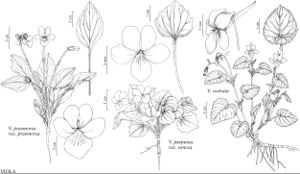Viola purpurea var. venosa
Bull. Vermont Agric. Exp. Sta. 224: 111. 1921.
Plants 3–8.5(–12) cm. Stems decumbent or erect, mostly buried, not much elongated by end of season, ± glabrous or puberulent. Leaves: basal: 1–5; petiole 5–10.3 cm, puberulent; blade purple-tinted abaxially, green adaxially, often shiny, ± orbiculate to ovate, 0.8–3.3 × 0.5–3.6 cm, ± fleshy, base truncate or ± cordate, oblique or not, margins usually irregularly dentate or crenate with 2–4 rounded teeth per side, sometimes coarse-serrate, apex acute to obtuse, abaxial surface puberulent, adaxial surface glabrous, glabrate, or sparsely puberulent; cauline: petiole 0.8–6 cm, puberulent; blade ovate, ± oblong or lanceolate, 0.9–2.7 × 0.6–2.9 cm, length 0.9–2.3 times width, margins usually coarsely crenate or dentate, sometimes ± serrate or ± entire, abaxial surface puberulent, adaxial surface glabrous (except along veins) to sparsely puberulent. Peduncles 2.9–7 cm, glabrous or puberulent. Lowest petal 6–14 mm. Capsules 4–5.5 mm. Seeds medium brown, 2–2.6 mm.
Phenology: Flowering Apr–Sep.
Habitat: Pine forests, deserts, gravelly plains, edges of wet meadows, grassy or rocky slopes, shaded or exposed areas, ridges, dry to moist soil, near snowdrifts
Elevation: 1300–3400 m
Distribution

B.C., Ariz., Calif., Colo., Idaho, Mont., Nev., Oreg., Utah, Wash., Wyo.
Discussion
Variety venosa is the most wide-ranging member of the Viola purpurea complex. It has been reported to hybridize with V. utahensis in Idaho, Nevada, and Utah (G. Davidse 1976).
Selected References
None.
